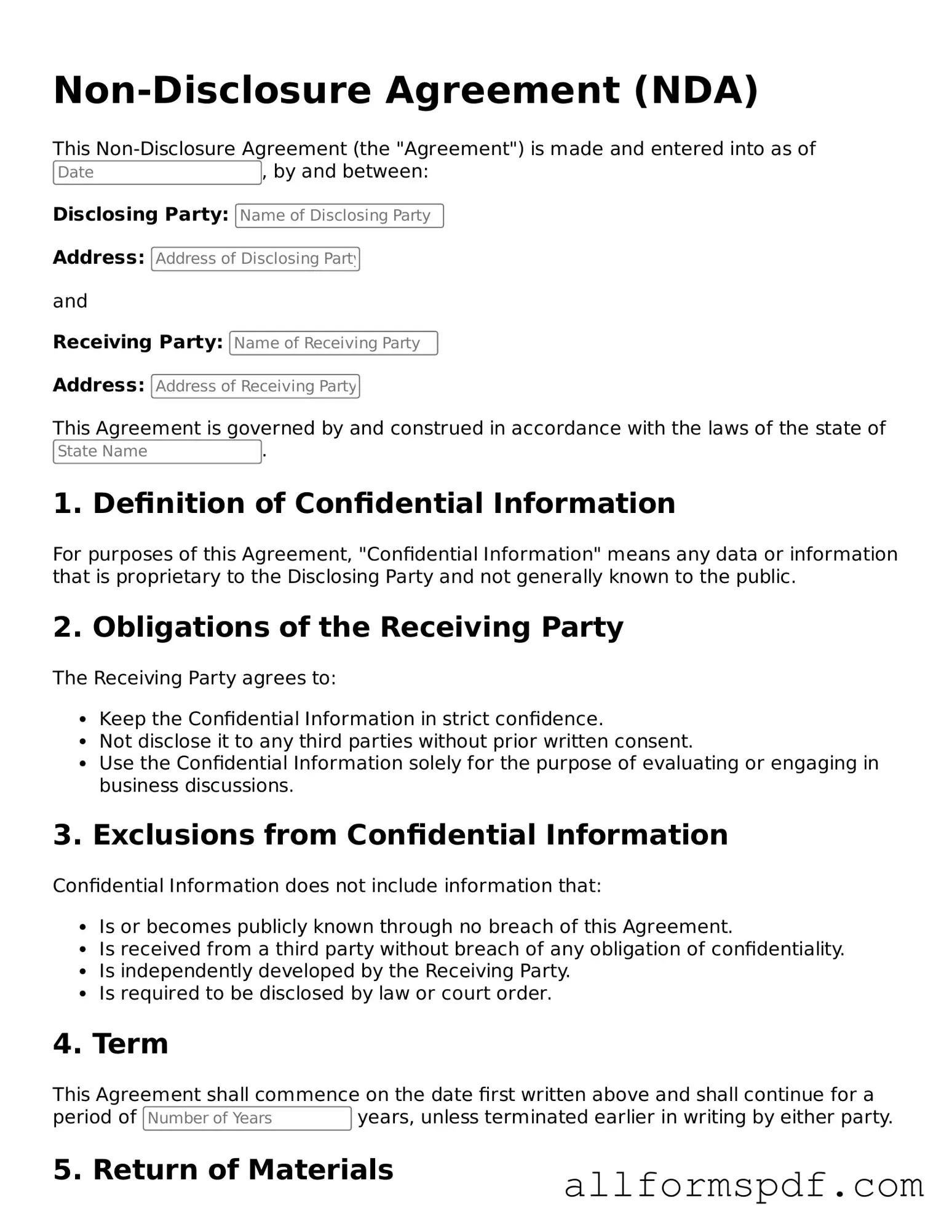Filling out a Non-Disclosure Agreement (NDA) can seem straightforward, but many individuals make common mistakes that can lead to complications down the line. One frequent error is failing to clearly define the scope of confidential information. Without specific terms, the NDA may not effectively protect the sensitive data it intends to cover.
Another mistake is neglecting to include the duration of the confidentiality obligation. An NDA should specify how long the information must remain confidential. Omitting this detail can create uncertainty and leave parties unsure of their responsibilities.
People often overlook the importance of identifying the parties involved. An NDA should clearly name all parties who will be sharing or receiving confidential information. Failing to do so can lead to misunderstandings about who is bound by the agreement.
Many individuals also forget to consider the consequences of a breach. An effective NDA should outline the repercussions if one party fails to uphold their end of the agreement. This can serve as a deterrent against potential violations.
Another common oversight is not including a clause for governing law. This clause determines which jurisdiction’s laws will apply in case of a dispute. Without it, resolving conflicts can become more complicated and costly.
Some people make the mistake of using overly complex language or legal jargon. An NDA should be clear and understandable to all parties involved. If the terms are confusing, it can lead to misinterpretations and disputes later on.
Lastly, many individuals forget to review the NDA thoroughly before signing. Rushing through this process can result in missing crucial details or making assumptions about the agreement’s terms. Taking the time to review ensures that all parties are on the same page and understand their obligations.
